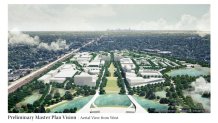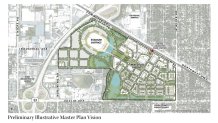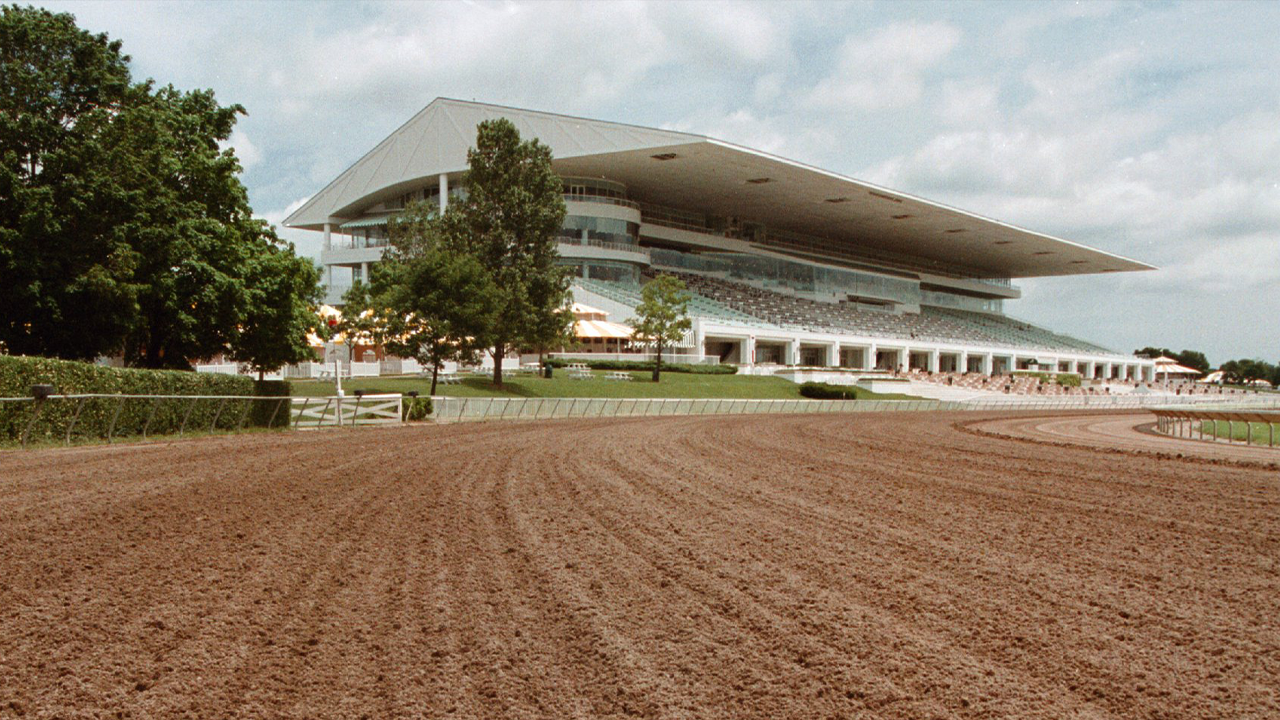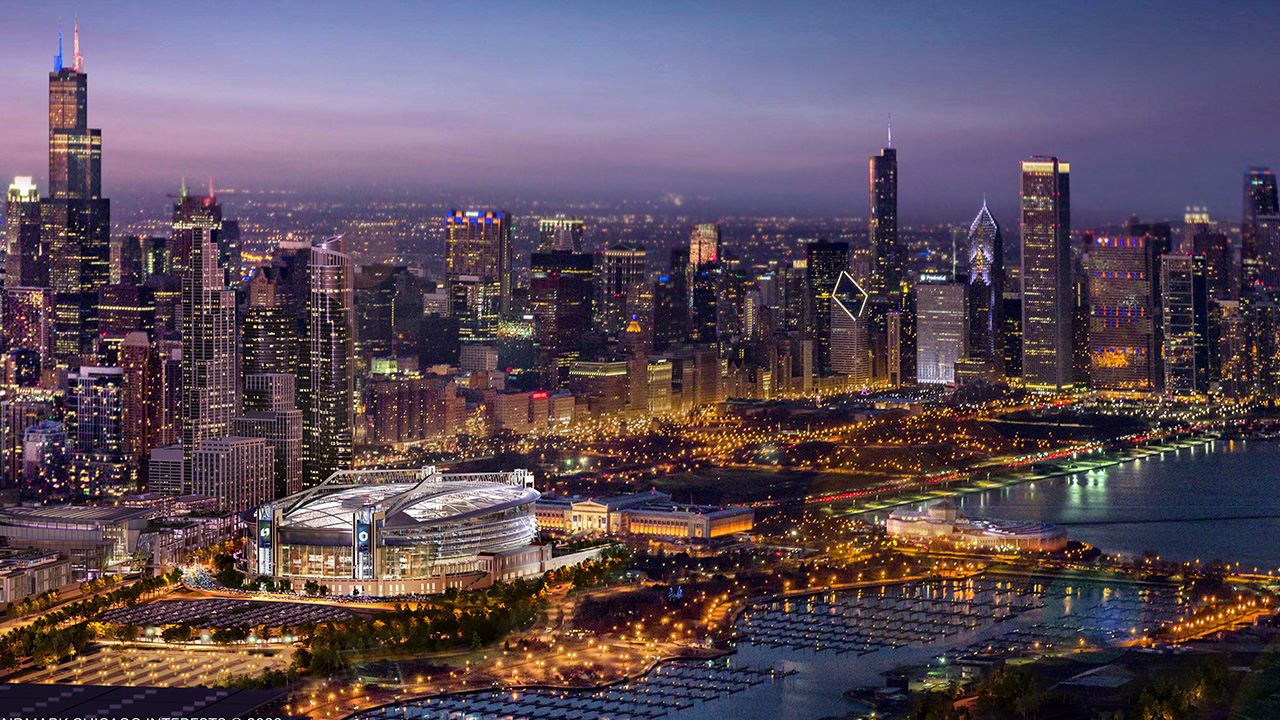For the first time, fans are getting a glimpse at what the Chicago Bears could build if they leave Soldier Field for Arlington Park.
The team gave fans a first look at their initial designs for a potential stadium in Arlington Heights as they consider the massive move, launching a new website Tuesday afternoon to detail their potential plans.
Here's what we know so far.
What would the plans include?
Aside from an enclosed stadium, the plans also include a much larger mixed-used space.
"Make no mistake, this is much more than a stadium project," a letter from the team reads.
Read the full letter from the team here.
In fact, if things go as planned, the team says the project will be "one of the largest development projects in Illinois state history."
"We envision a multi-purpose entertainment district anchored by a new, best-in-class enclosed stadium, providing Chicagoland with a new home worthy of hosting global events such as the Super Bowl, College Football Playoffs, and Final Four," the letter states.
Among the plans is a "multi-purpose entertainment, commercial/retail, and housing district."
Feeling out of the loop? We'll catch you up on the Chicago news you need to know. Sign up for the weekly Chicago Catch-Up newsletter.
"The long-term project vision for the entire property is an ongoing work-in-progress, but could include: restaurants, office space, hotel, fitness center, new parks and open spaces, and other improvements for the community to enjoy," the team said.
What would a new stadium in Arlington Heights look like?
Here are some photos released by the Bears Tuesday:



Is it a done deal?
The team made clear that nothing is guaranteed about the potential move from Soldier Field as much remains uncertain - including funding.
"We remain under contract to purchase the property, but there are conditions that must be met in order to be in a position to close. If we do close on the property, it does not guarantee we will develop it," the letter states, adding that, "while the Bears will seek no public funding for direct stadium structure construction... we look forward to partnering with the various governmental bodies to secure additional funding and assistance needed to support the feasibility of the remainder of the development."
What's next?
The renderings come just ahead of a community meeting between the team and Arlington Heights residents.
The meeting, which will be held from 7-9 p.m. Thursday at John Hersey High School in Arlington Heights, will detail what a Bears statement called “one of the largest development projects in Illinois state history.” Arlington Heights Mayor Tom Hayes said neither he nor members of the Arlington Heights village board would be part of the community meeting intended to field concerns and suggestions from residents of the suburb.
The meeting will be first come, first served, according to the team, with doors opening at 5:30 p.m.
"The meeting will include opening remarks from team leadership and conceptual plans for a transit-oriented mixed-use entertainment district anchored by a stadium that would be one of the largest development projects in Illinois state history," the team said in a statement.
What will the timing of the project be?
The Bears are in escrow for the former Arlington Racetrack site, for which they signed a $197.2 million purchase agreement last year. President/CEO Ted Phillips said in January he anticipated closing on the land to take until the end of this year and possibly even drag into early 2023.
“Our focus for long-term development is exclusively on that property at Arlington Park,” Phillips said in January.
Hayes said he expects the village to take up more substantial discussion about their negotiations with the team later this month. The village board is next scheduled to convene Tuesday.
The Bears said they "remain committed to Soldier Field and will honor the terms of its lease," which continues through 2032.
Why do the Bears want to move?
While their current home at Soldier Field is historic, its stature is diminished by its deficiencies compared to state-of-the-art stadiums around the NFL. Soldier Field opened in 1924 and earned National Historic Landmark status in 1984 before losing it in 2006 after renovations left it with a mismatched look as though a spaceship had landed on top of the iconic columns.
Almost every stadium in the league far exceeds Soldier Field’s comfort and amenities, and late-season games on the lakefront can be brutally cold. It has been widely assumed that any new stadium would be indoors.
It has also been problematic for the Bears to rent the stadium from the Chicago Park District rather than owning their own building. That arrangement severely limits what they can do with the facility and cuts into revenue.
Soldier Field also has the NFL’s smallest capacity at about 62,000. There are 13 stadiums that can hold 70,000-plus, and most of those are in smaller markets than the Chicago area.
Building a stadium in Arlington Heights would immediately put the area in line to host a Super Bowl (currently sites are scheduled through the 2025 game). The league has rewarded every team that has done so with a Super Bowl, even if it’s not part of the regular rotation. The Vikings’ U.S. Bank Stadium opened in 2016 and hosted the Super Bowl in 2018.
What about Soldier Field?

Mayor Lori Lightfoot and the city of Chicago haven't stopped trying to lure the Bears to keep playing at the famed spot in the heart of the city, with Lightfoot's administration releasing plans over the summer for three potential renovations of the historic stadium.
"Not surprisingly, we are doing what we believe is making a compelling case for the Chicago Bears to stay in Chicago. They want a tier one stadium environment to maximize revenues, and we agree that we are going to keep making the case to the Bears, the NFL and public that a revitalized Soldier Field makes the most economic sense for that storied franchise," Lightfoot said during an address at the time.
According to the mayor's office, improvements would include:
- Expanding seating from 61,500 seats up to 70,000 total seats including additional fan activation areas
- Increasing the number of traditional suites from 133 to 140
- Adding six new major club and experiential areas
- Quadrupling the food and beverage square footage from 50,000 square feet to 200,000 square feet
- Adding secondary club and activation areas to as many as 20.
- Creating more flexible event space and multi-purpose venues including up to four venues with capacity ranging from 5,000 to 60,000 or more
See renderings of the three proposals here.




